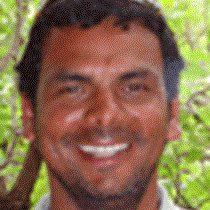Espanola is the most southeasterly island of the archipelago. Geologically speaking it’s the oldest islands of all at close to five million years old. It stands not too high above ocean surface, and is one of the smallest too. From a distance it looks like a desert, and its vegetation remains grey and brown except for the months of February and March when the island collects it highest precipitation.
It is this island where the National Geographic Endeavour planned its expedition today. We are visiting two different destinations on the same island, both located at the two extremes of the volcanic formations. On the eastern side Gardner Bay is our destination, and the most westerly point of the island, Punta Suarez, is where we’ll go in the afternoon.
The morning visit is reserved for aquatic action such as deep water snorkeling, swimming from the beach, or kayaking. All of this in a place you could easily compare with Eden; the sea lions, tropical reef fish, and white sand beach are surreal.
The afternoon stop is dedicated to a very special nesting location in the entire archipelago. The walk to get there is along a rocky difficult path with great biodiversity. You understand the moment you walk here that you’ll see the Nazca booby, blue-footed boobies, Galapagos doves, albatrosses, and so many others. We simply do not stop having an amazing experience as we walk Punta Suarez. We all wonder what is waiting for us at the next stop, the island of Floreana.







